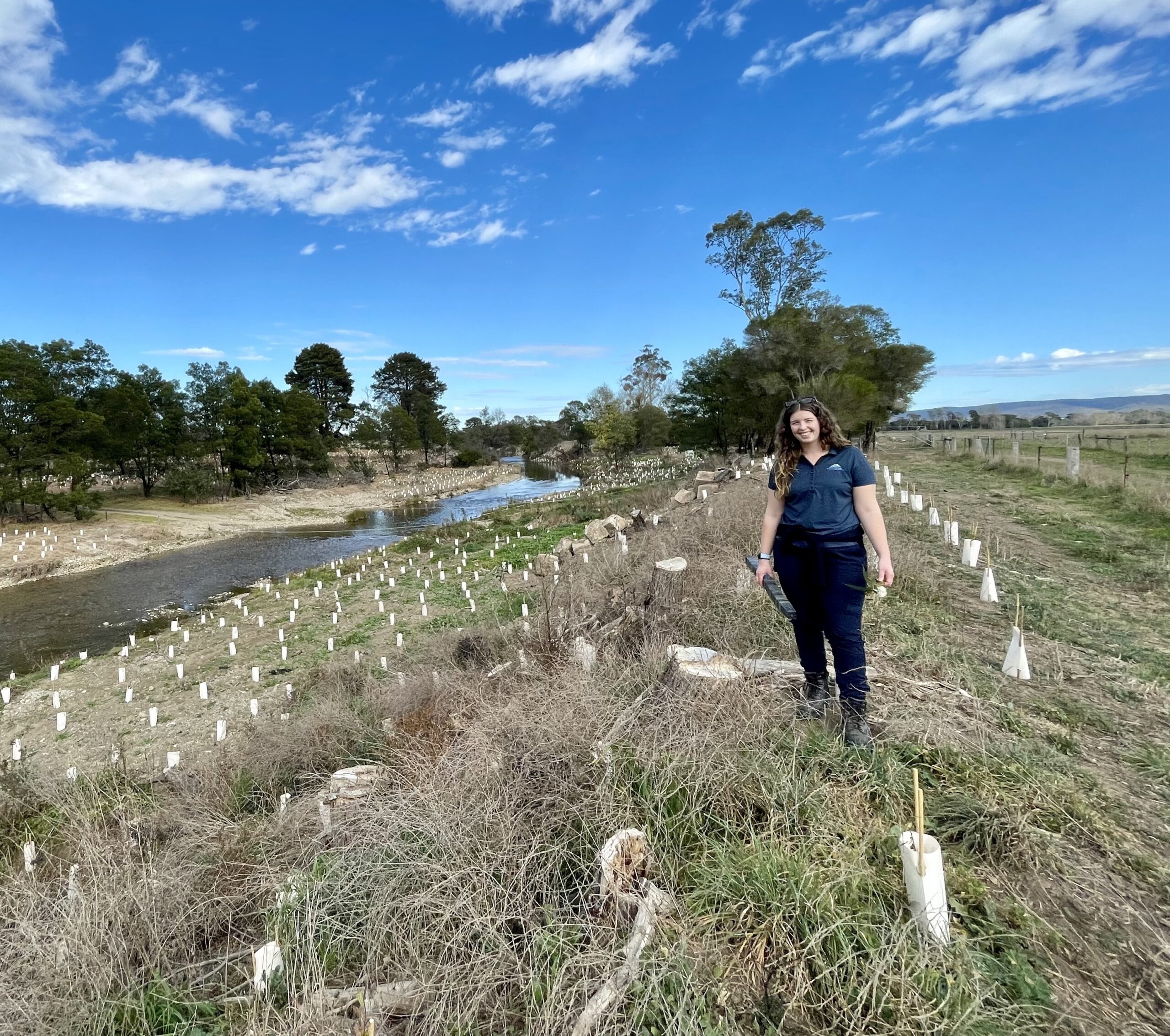Future shines bright for Rainbow Creek
LOCATION
Cowwarr to Heyfield, West Gippsland
TRADITIONAL OWNERS
Gunaikurnai
OUTPUTS
- 22 hectares weeds removed (98% of them willows) from 4.7 kilometres of riverbanks
- 4.6 kilometres of fencing
- 27.8 hectares of riparian zone protected and enhanced
- 27,800 plants put in
- 2 chute structures constructed to stop river avulsion risks
- 6 engagement events
INVESTMENT
Victorian Government
PARTNERS
Community, Southern Rural Water, Gippsland Water, and VR Fish
Rivers are dynamic and ever changing – like Rainbow Creek in Central Gippsland that formed during an exceptional flood event in 1952 when it jumped course from the main Carran Carran (Thomson River).
When the flooding caused Rainbow Creek to escape the main river, it carved a new channel through the surrounding, lower lying farmland and created significant disruption to the local community downstream.
Stretching 80 kilometres between the towns of Cowwarr and Heyfield and running mainly through private agricultural land, Rainbow Creek is where the Carran Carran (Thomson River) naturally wants to flow. Cowwarr Wier was constructed in 1959 to keep the main river following its original course, deliver water to Rainbow Creek and provide irrigation offtake for the
Macalister Irrigation District.
Despite the construction of the weir, there is still a risk that a flood will cause the main river to again jump course and create a new path (known as an avulsion) to the lower-lying Rainbow Creek. Such an event would be damaging to local agricultural businesses and also pose a risk to the Gippsland Lakes from large amounts of sediment and silts entering the waterways. West Gippsland CMA is working with the community to manage this risk and keep the rivers healthy and flowing.
“For the past four years, we’ve been delivering the Thomson and Rainbow Management Plan to manage the avulsion risk and improve waterway health for the benefit of agriculture, community and the Gippsland Lakes,” said Board Chair, Mikaela Power.
Together with landholders, the CMA planted 27,800 trees over 28 hectares, treated 22 hectares of weeds, including willow removal, and built close to five kilometres of fencing to protect the river and strengthen its banks. A major highlight was fencing a continuous two kilometre stretch along the Rainbow to create an extra wide buffer that protects and future proofs the young river and enhances biodiversity. The team also worked to reduce avulsion hotspots (where the river is most likely to form new channels) through armouring banks with rock and grass chutes. “We are thankful for the community who have been instrumental in this project through participating on a panel to shape the original plan and then supporting the actions to implement it.” “It demonstrated what is possible when we work together with a community that has remained engaged and involved in the project from the outset. Together we are reshaping history and helping to nurture the young, fast-flowing Rainbow Creek to become a stable, resilient and healthy waterway.” Ms Power said.

West Gippsland CMA Catchment & Community Project Officer Kelsey Tong inspects planting at Rainbow Creek.









